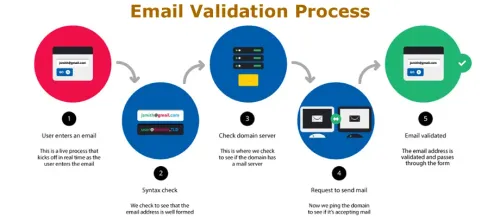Email marketing is a powerful tool for businesses to connect with their audience, but it's only as effective as the quality of your email list. Ensuring your list is free of invalid or fake email addresses is essential. This is where email validation and verification come into play. In this comprehensive guide, we'll explore the world of email validation and verification, understand their differences, and introduce you to the best tools and practices to maintain a clean and effective email list.
The Importance of Clean Email Lists
Before we delve into the specifics of email validation and verification, let's establish why maintaining a clean email list is crucial for your business:
1. Improved Deliverability
Invalid or non-existent email addresses can trigger spam filters or lead to email bounces. A clean list ensures your emails reach the intended recipients' inboxes.
2. Cost Efficiency
Sending emails to invalid addresses is a waste of resources. Cleaning your list can save you money on email marketing services.
3. Enhanced Reputation
A high bounce rate can harm your sender reputation. A clean list helps maintain a positive sender reputation, ensuring your emails are trusted and delivered.
4. Better Analytics
Accurate data allows for more meaningful analytics. You can track open rates, click-through rates, and other metrics more effectively with a clean list.
Understanding Email Validation
Email validation is the process of checking if an email address is properly formatted and without syntax errors. It confirms that an email address has the correct structure but doesn't verify if it's deliverable or if the mailbox exists. Here are the key aspects of email validation:
Syntax Checking
Syntax validation ensures that an email address adheres to the basic structure rules, such as having an "@" symbol, a domain, and no illegal characters.
Domain Verification
This step checks if the domain in the email address (e.g., "example.com") exists and is properly configured to receive emails.
Disposable Email Detection
It identifies and blocks email addresses associated with temporary or disposable email services.
Role Account Detection
Role accounts like "[email protected]" or "[email protected]" are often used for general inquiries. Email validation can flag these addresses.
Exploring Email Verification
Email verification, on the other hand, takes the process a step further. It not only validates the syntax and domain but also checks if the email address is deliverable and if the mailbox exists. Here are the key aspects of email verification:
SMTP Verification
SMTP (Simple Mail Transfer Protocol) verification connects to the recipient's email server to check if the address is valid and if it can receive emails.
Catch-All Domain Identification
Catch-all domains accept emails sent to any address at that domain. Email verification identifies such domains.
Disposable Email Detection
Similar to email validation, email verification can also detect disposable email addresses.
Risk Assessment
Some verification services provide risk scores for email addresses, helping you assess the likelihood of an email bouncing or being associated with fraudulent activity.
Best Practices for Email Validation and Verification
Now that you understand the distinctions between validation and verification, let's explore some best practices for using these techniques:
1. Regular List Cleaning
Make list cleaning a routine practice. Regularly validate and verify email addresses to keep your list up-to-date.
2. Double Opt-In Process
Implement a double opt-in process for subscribers. This ensures that users provide valid email addresses during registration.
3. Use a Reputable Service
Choose a reliable email validation and verification service. Research and select a tool that suits your needs.
4. Segment Your List
Segment your email list based on the verification results. Send targeted emails to verified addresses, improving your campaign's effectiveness.
5. Monitor Deliverability Metrics
Keep an eye on deliverability metrics like bounce rates and spam complaints. High bounce rates indicate the need for list cleaning.
Top Tools for Email Validation and Verification
Several tools and services can help you validate and verify email addresses. Here are some of the best ones in the market:
1. Verifalia
Verifalia offers both email validation and verification services. It checks syntax, domains, and even provides risk assessment.
2. ZeroBounce
ZeroBounce is a comprehensive email validation and verification platform that also offers real-time API integration.
3. Hunter Email Verifier
Hunter specializes in email verification and provides deliverability scores.
4. Verify Email Address
Verify Email Address offers a simple and efficient email verification service.



